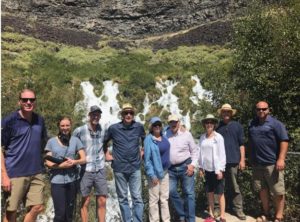The Snake River – the lifeblood of southern Idaho – has historically been a “working” river. Numerous dams impede the mighty river’s flow and an extensive canal system whisks away the Snake’s water to irrigate large tracts of agricultural land and sustain industrial dairy operations with tens of thousands of cows. Using the river in this way has been extremely profitable for some – valuable crops are grown on thousands of acres that would otherwise be sagebrush desert and Idaho’s dairy industry is now the third largest in the nation. But at what cost to the natural environment and the communities around the Snake?
The Present
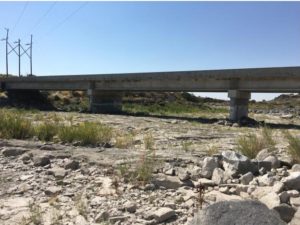
On August 30, ICL led a vehicle tour to highlight key aspects of the Snake River system near Twin Falls. ICL board members, local reporters, community residents, and reps from the City of Twin Falls, Twin Falls Canal Company, and Snake River Soil & Water Conservation District took part. We had a good look at how the Snake still functions primarily as a working river today. That point was driven home during our stop at Milner Dam, where during this time of year you can literally stand in the dry riverbed of the Snake as every last drop of the river is diverted above the dam for agriculture.
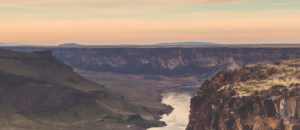
We also stopped at a number of Snake River tributaries that have been essentially reduced to agricultural runoff this time of year, with visible plumes of sediment entering the river at their confluences. Even the majestic Niagara Springs have been harnessed for human use, providing water for a trout farm and fish hatchery along the Snake. The day highlighted pockets of beauty along the Snake River canyon, but also served as a stark reminder of how we have transformed the mighty river.
The Past
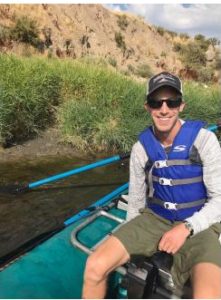
The day before our vehicle tour, Hannah Smay (our Central Idaho community engagement assistant) and I had the pleasure of floating on the Snake River below Lower Salmon Falls Dam. Rich Bupp, a former river guide and current executive director of EarthKnowSys consulting, led us down the Snake. Familiar with the more developed sections of the “working” river, I was struck by the pristine nature of this particular section. During just a few hours, we saw great blue herons, several deer, a coyote, and a golden eagle – not too shabby! Several Class II-III whitewater sections kept us on our toes (and a little wet!) as we weaved our way through basalt canyons. I highly recommend floating this stretch with a local outfitter, or on your own if you have the proper experience and equipment.
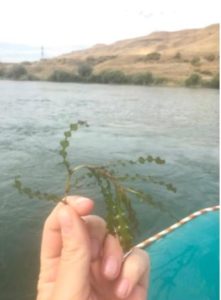
We couldn’t entirely escape the present on this float trip, however. We saw algae-covered rocks on the shallow shorelines and rooted macrophytes, aquatic plants which grow in nuisance quantities in part due to excess phosphorus entering the river upstream. These served as sobering reminders that how the Snake is used has significant consequences for less-developed downstream stretches of the river.
What’s Next?
Our most encouraging takeaway from our trip to the Snake River was meeting the many, many different people who care deeply about the river’s health. Achieving ICL’s goal of making the Snake River not just safe, but also enjoyable to fish and swim in again will require the involvement of local communities as well as stakeholders from industry and agriculture. ICL recognizes the integral role of the Snake River in the lives and livelihoods of Idahoans, especially in the Magic Valley. To learn more about ICL’s campaign to save the Snake and make the river swimmable and fishable again, please visit our website.
